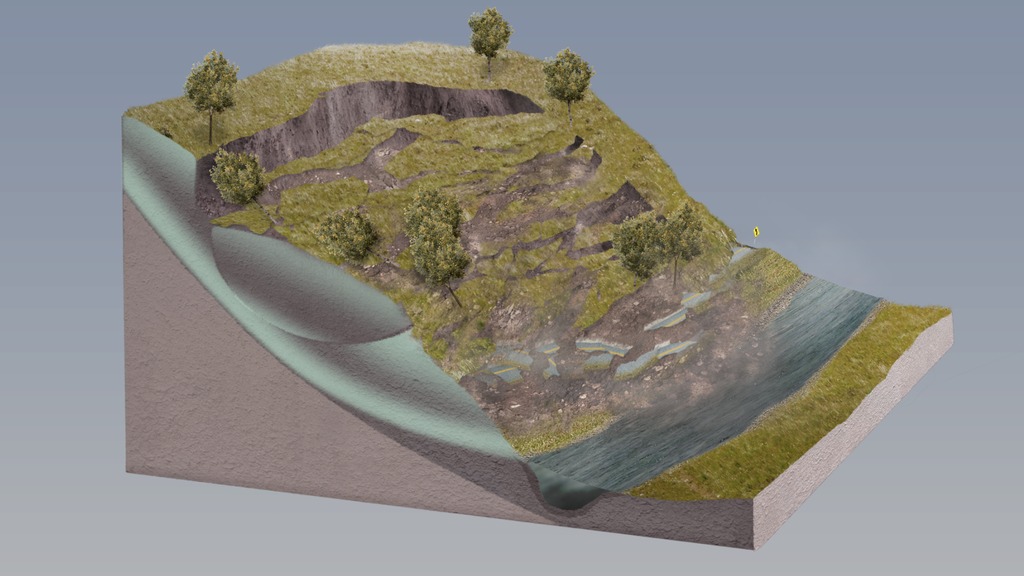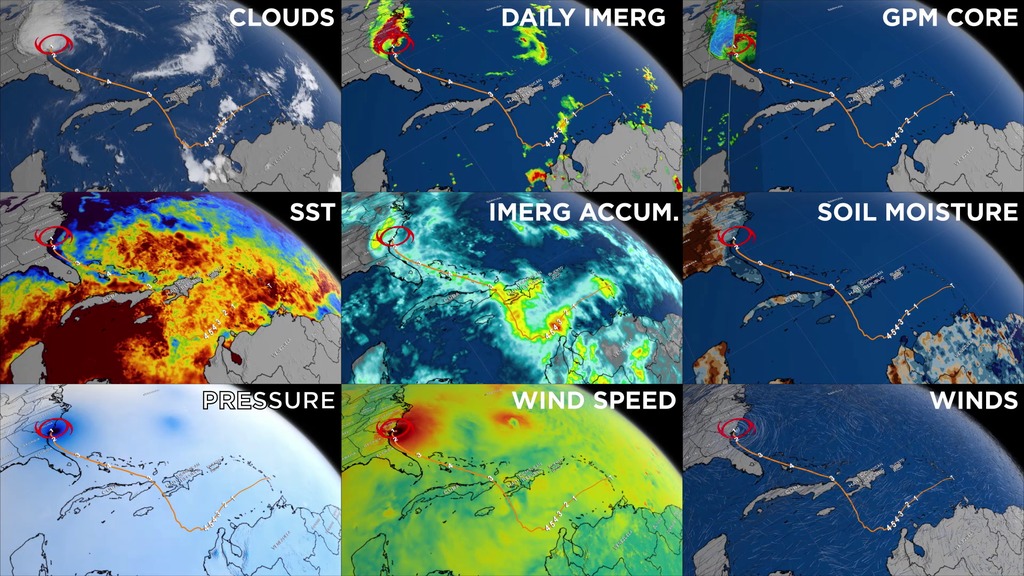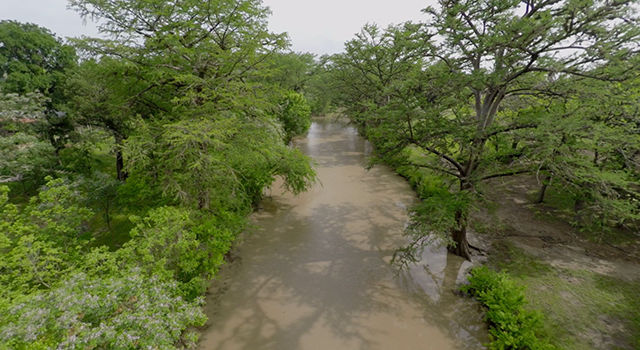Characterizing the surface and weather conditions that can lead to flooding is often difficult due to a lack of ground-based information available to monitor or forecast flood events (particularly in developing countries). To fill some of these data gaps, scientists and forecasters often rely on satellite sources as inputs to hydrologic models that can predict where the water will likely flow once it hits the ground. While the majority of flood models currently focus on local or regional scales (taking into account one drainage basin or watershed) some recent research has shifted to estimating areas of potential flooding on a global scale.
Example 1 - Floods: The Global Flood Monitoring System (GFMS) is a NASA-funded experimental system that uses real-time satellite precipitation data as part of their flood monitoring and prediction tools. The model combines the satellite precipitation data with a hydrologic model, which includes information about the types of soil, soil moisture, vegetation, slopes, rivers, and streams as well as other factors that affect whether an area will flood. The end product is a series of estimates describing potential flooding conditions that are produced every three hours around the world. Data can be accessed through the Global Flood Monitoring System. Starting with the 1/8th degree resolution maps, users can "zoom in" to regional areas, change which parameter to view, time sequence the maps over the last few days or months, and select a latitude/longitude location and plot time sequences of data at a point. Once sufficiently "zoomed in"(~10° latitude window is recommended) on the 1/8th degree maps, one can select from the 1 km resolution parameters (streamflow, water storage,inundation map) for a high resolution view of the regional basin. Time sequences at this high resolution of the map can be viewed and time series at a point can also be plotted by clicking the mouse at the location. The global flood potential map can also be accessed through https://pmm.nasa.gov/precip-apps, where users can select the global flood layer in addition to rainfall accumulations from 30 minutes to 7 days.

GPM data is used by the Global Flood Monitoring System (GFMS) to detect potential flooding conditions and estimate intensity. This system also uses GEOS-5 precipitation forecast to estimate streamflow within affected areas. Top left shows the 7-day GPM rainfall totals over California ending on 21 Feb. 2017. Middle left plot shows forecasted 3-day rainfall from the GEOS-5 model near the Oroville Dam area. Bottom left plot shows the forecasted flood detection/intensity for 22 Feb. 2017, forecasts over northern California are estimated to be over 200 mm for the 22 Feb. 2017 (bottom). This information is valuable for improving situational awareness of floods. This capability can be applied anywhere globally, especially where conventional data and methods are not available.
Example 2 - Fires: The Fire Weather Index System is the most widely used fire danger rating system in the world. The Global Fire WEather Database (GFWED) https://data.giss.nasa.gov/impacts/gfwed/ developed at NASA GISS integrates different weather factors influencing the likelihood of a vegetation fire starting and spreading. Calculations require measurements of temperature, relative humidity, wind speed, daily snow-depth, and precipitation totaled over the previous 24 hours. GPM data, along with other satellite, gauge-based, and model products are incorporated in different versions of the GFWED and are used by fire management agencies around the world. This data is open to the public and can provide improved situational awareness of potential fire danger around the world.

The Fire Weather Index tracks the potential for extreme fire behavior, shown here with Aqua & Terra MODIS active fires using GPM data for Aug 2015 record-breaking Pacific Northwest wildfires (left). The Fine Fuel Moisture Code tracks the potential for fire starts, such as these predominantly agricultural and forest plantation prescribed fires in the southeast US (right).
Example 3 - Landslides: A global landslide nowcast model provides situational awareness of landslide hazards for a wide range of users. The model uses GPM near real-time rainfall data with a global susceptibility map (available here: https://pmm.nasa.gov/applications/global-landslide-model) to identify locations with landslide potential. This model is updated every 30 minutes and the data is accessible via Applications Programming Interface at and interactive map at https://pmm.nasa.gov/precip-apps. NASA landslide susceptibility, hazard, and rainfall data are available globally in near real-time and have been used by many international and domestic organizations, such as the World Bank, World Food Programme, Pacific Disaster Center, FEMA, and the US Army Corps of Engineers.

1-day GPM IMERG rainfall accumulation (left) for the U.S. West Coast and corresponding landslide nowcasts (right) are shown for Feb. 21st, 2017. Results are updated every 30 minutes and data is available at https://pmm.nasa.gov/precip-apps.















